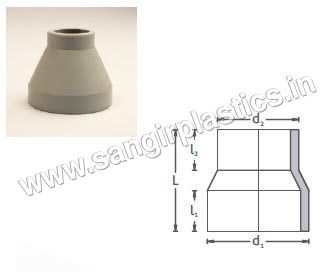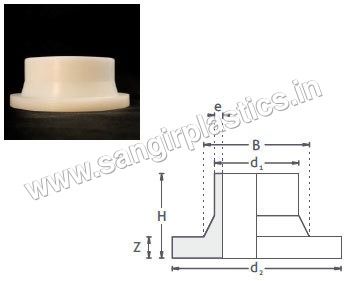
Dredging Rubber Hoses
100.0 INR/Piece
Product Details:
- End Type Fixed, Rotating, or Loose Flange
- Material Grade Industrial Grade Elastomer & Synthetic Textile
- Capacity 15000 Ton
- Port Size DN100 to DN1200
- Dimension (L*W*H) 100- 1200 Millimeter (mm)
- Material High Abrasion Resistant Rubber (with reinforcement layers of synthetic fabric and steel wire)
- Pipe Type Dredging Rubber Hose
- Click to view more
X
Dredging Rubber Hoses Price And Quantity
- 100.0 INR/Piece
- 10 Piece
Dredging Rubber Hoses Product Specifications
- DN100 to DN1200
- 100- 1200 Millimeter (mm)
- Fixed, Rotating, or Loose Flange
- Industrial Grade Elastomer & Synthetic Textile
- 15000 Ton
- Flexible, Abrasion Resistant, High Tensile Strength, Weatherproof, Corrosion Resistant
- Not Applicable (Flanged Connection)
- Dredging operations, slurry and sand transport in mining, river cleaning, and marine construction
- Yes
- Flanged
- Marine and Mining Dredging Projects
- Up to 10 Bar
- 100- 1200 Millimeter (mm)
- Straight cylindrical, optionally tapered as per site requirement
- Smooth Black Rubber or Wrapped Finish
- Dredging Rubber Hose
- High Abrasion Resistant Rubber (with reinforcement layers of synthetic fabric and steel wire)
- 2.5 to 10 Bar (customizable as per client s requirement)
Product Description
Dredging rubber hoses are specialized hoses used in dredging operations to transport dredged materials like sand, gravel, mud, and debris from the dredging site to the designated discharge location. These hoses are essential components in various dredging applications, including harbor maintenance, beach nourishment, land reclamation, and underwater mining.
Key Characteristics of Dredging Rubber Hoses:
Durability: Made from high-quality rubber with reinforced layers to withstand harsh environmental conditions, abrasive materials, and the high pressures involved in dredging operations.
Flexibility: Designed to be flexible enough to handle the dynamic movements and varying positions of dredging equipment.
Wear Resistance: Inner linings often made from abrasion-resistant materials to prolong the lifespan of the hose and reduce maintenance costs.
Size and Length: Available in various diameters and lengths to suit different dredging needs and equipment specifications.
Flange Connections: Equipped with flanged ends for secure attachment to dredging equipment and pipelines, ensuring a tight seal to prevent leaks.
Applications of Dredging Rubber Hoses:
Harbor and Port Maintenance: Removing silt, sand, and debris to maintain navigable waterways.
Beach Nourishment: Transporting sand to eroding beaches to restore their original state.
Land Reclamation: Moving materials to create new land areas for construction and development.
Underwater Mining: Extracting valuable minerals from underwater deposits.
Maintenance and Safety:
Regular Inspections: Frequent checks for signs of wear, damage, or leaks to ensure hoses remain in good working condition.
Proper Storage: Storing hoses in a dry, shaded area to prevent degradation from UV exposure and environmental factors.
Correct Usage: Using hoses within their specified pressure and temperature ranges to prevent premature failure.
Conclusion:
Dredging rubber hoses are vital for the efficiency and success of dredging operations. Their construction and design are tailored to handle the demanding conditions of transporting abrasive and high-pressure materials in marine and freshwater environments. Proper selection, maintenance, and handling of these hoses can significantly impact the overall productivity and safety of dredging projects.
Highly Durable Construction
Designed with high-abrasion resistant rubber and reinforced layers of synthetic fabric and steel wire, these hoses withstand tough dredging conditions. The robust structure ensures long service life even in abrasive environments, contributing to minimal maintenance downtime and operational efficiency.
Flexible Customization Options
Available in a wide range of dimensions, our hoses can be customized to specific lengths and diameters as required by the client. The flexible bending radius and variety of flange types (fixed, rotating, or loose) make them suitable for diverse site installations in both marine and mining sectors.
Optimal Performance in Extreme Conditions
Capable of functioning in temperatures ranging from -20C to +80C, these hoses deliver consistent performance under varying climatic conditions. The industrial-grade elastomer composition ensures resistance to weather, corrosion, and high tensile stressmaking them reliable for continuous use in harsh environments.
FAQs of Dredging Rubber Hoses:
Q: How are these dredging rubber hoses used in marine and mining operations?
A: These hoses are primarily used for transporting slurries, sand, gravel, and mud between dredging equipment and discharge points in marine construction, mining operations, river cleaning, and land reclamation projects. Their robust construction and flexibility make them ideal for handling high-abrasion materials.Q: What are the main benefits of using reinforced dredging hoses with steel helix wire?
A: The steel helix wire reinforcement offers excellent flexibility while maintaining hose shape during operation and preventing collapse under vacuum. Coupled with textile layers, this design enhances pressure resistance and durability in demanding dredging environments.Q: When should I choose a customized length or diameter for my dredging hose?
A: Custom lengths and diameters are chosen when standard sizes do not meet specific project requirements. Providing details such as pump location, material flow, and site layout helps ensure the best-fit solution for your application, optimizing efficiency and performance.Q: Where are these hoses typically installed during dredging projects?
A: These hoses are installed between dredger discharge outlets, floating pontoons, and pipeline connections onshore or offshore. Their flanged ends allow secure attachment to machinery or piping systems, enabling quick assembly and reduced downtime during installation or replacement.Q: What is the process for connecting the hose to other dredging equipment?
A: Dredging hoses are supplied with carbon steel or galvanized flanged ends, which are bolted directly to the mating flanges on pumps, pipes, or other system components. No threading is needed, ensuring a sturdy and leak-proof connection even at high pressures.Q: Which environments are suitable for deploying these hoses?
A: These hoses are suitable for a variety of environments such as coastal marine sites, rivers, mining zones, and construction channelsany location that requires movement of abrasive materials under varying weather and pressure conditions.Q: What makes these hoses particularly resistant to corrosion and abrasion?
A: High abrasion-resistant industrial-grade elastomers and synthetic textiles protect the hose from wear, while the smooth black rubber or wrapped surface finish shields against corrosive elements, extending the hoses service life in harsh operating conditions.Tell us about your requirement

Price:
Quantity
Select Unit
- 50
- 100
- 200
- 250
- 500
- 1000+
Additional detail
Mobile number
Email







 Call Me Free
Call Me Free
